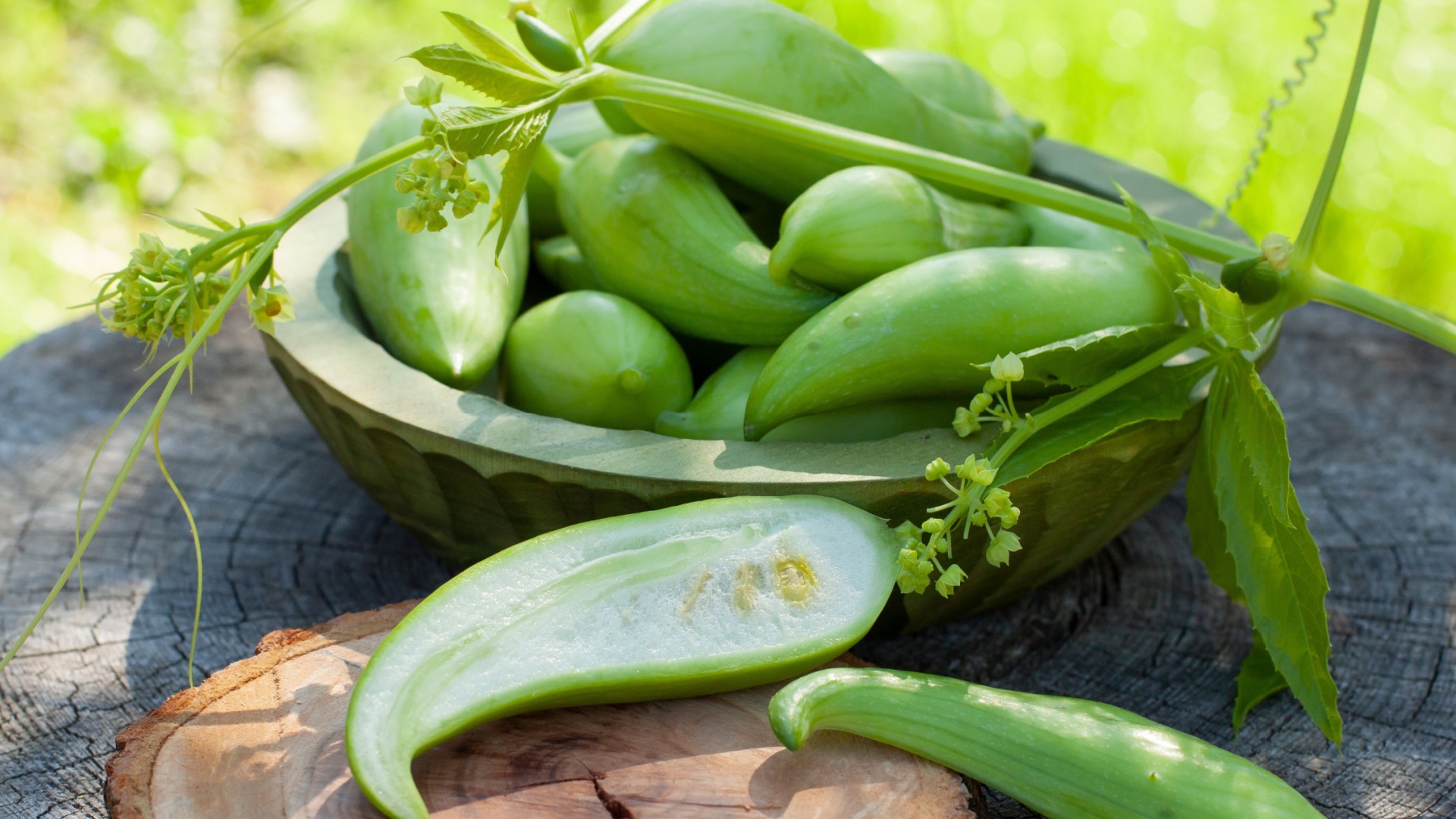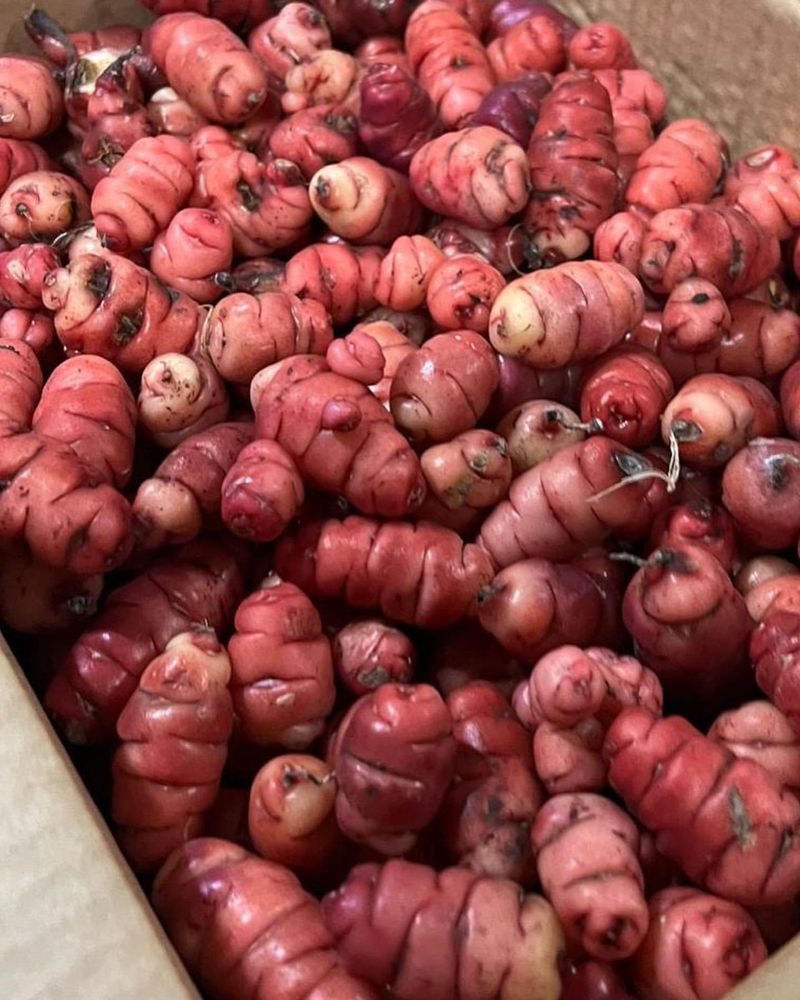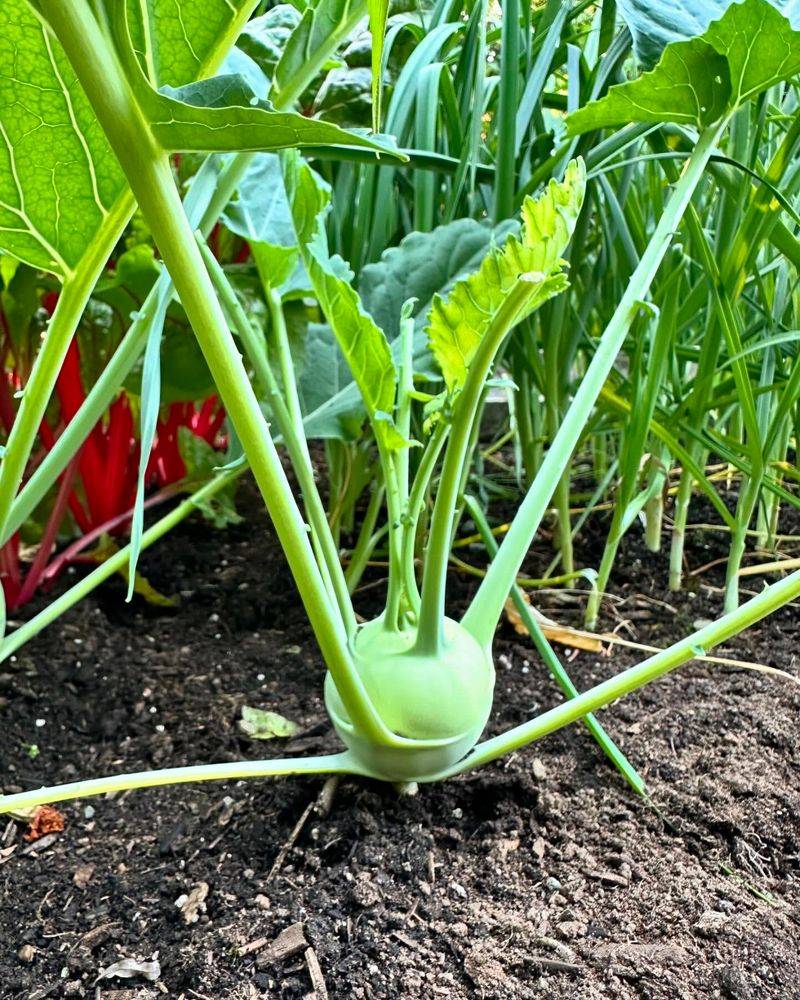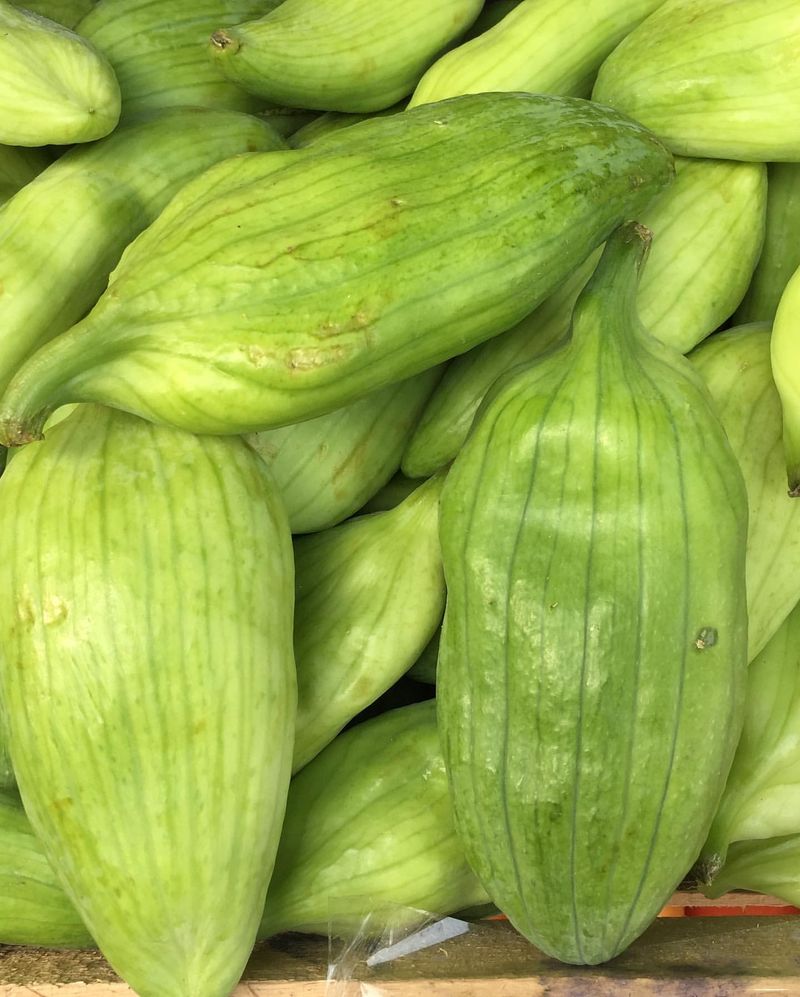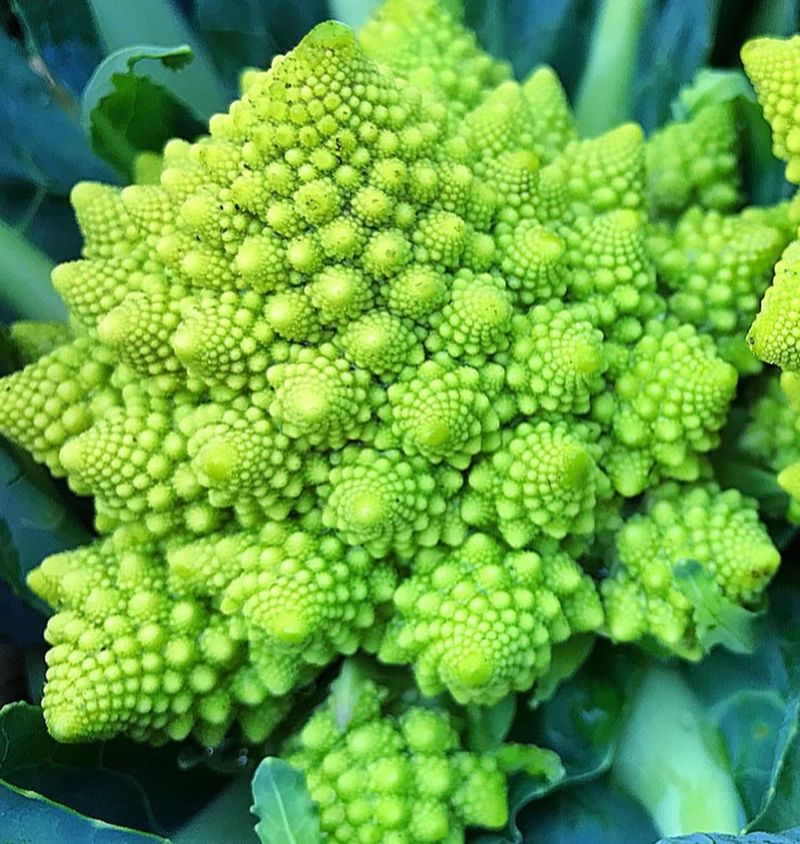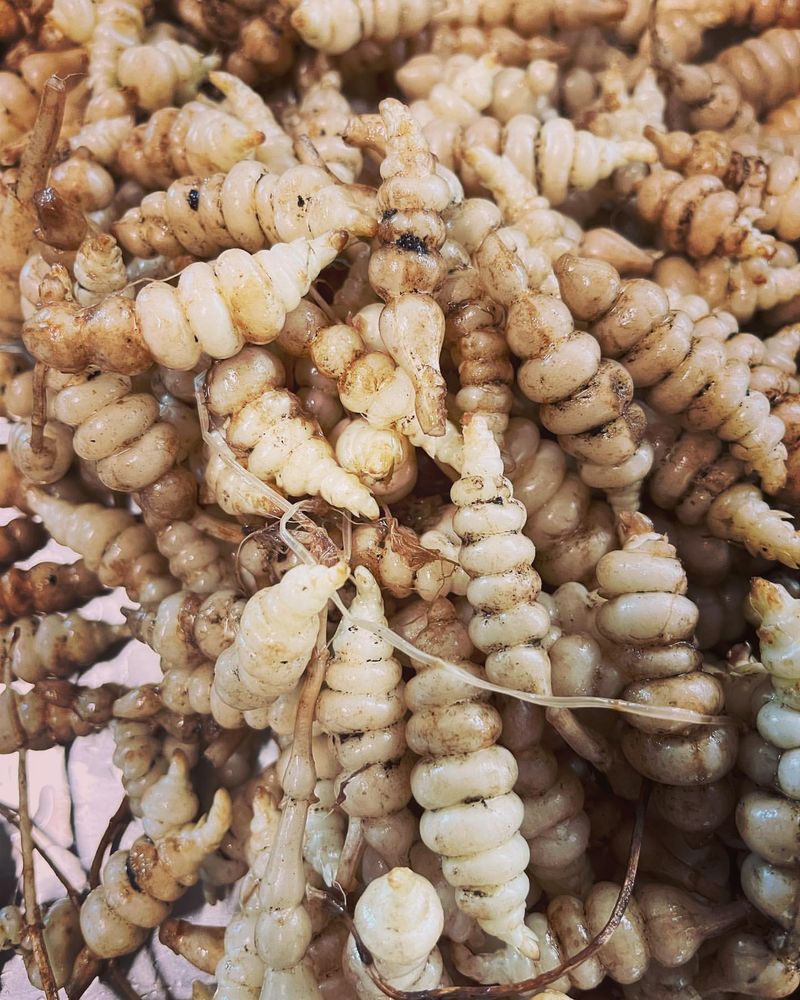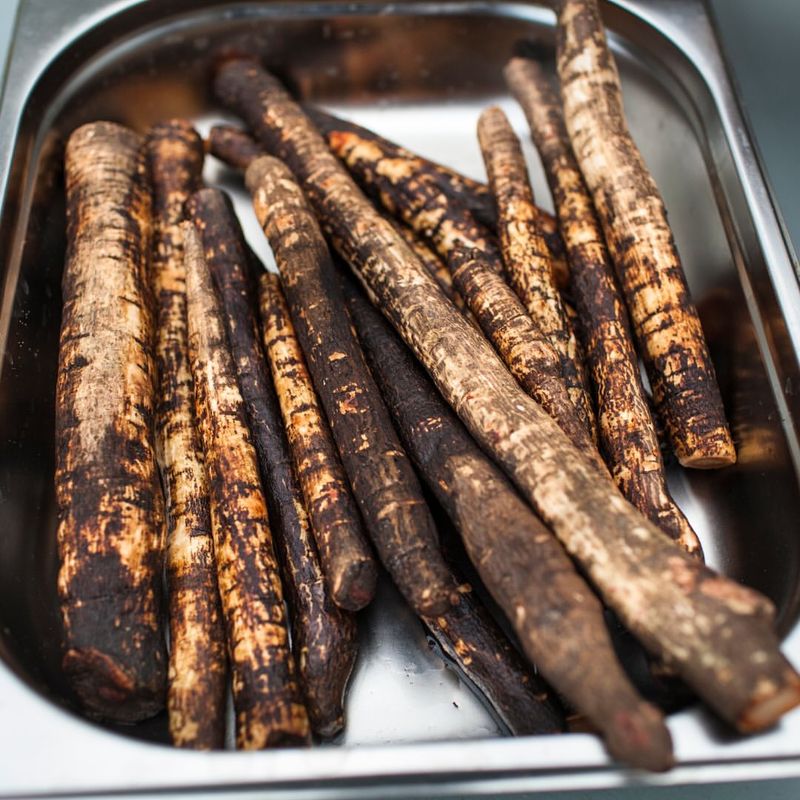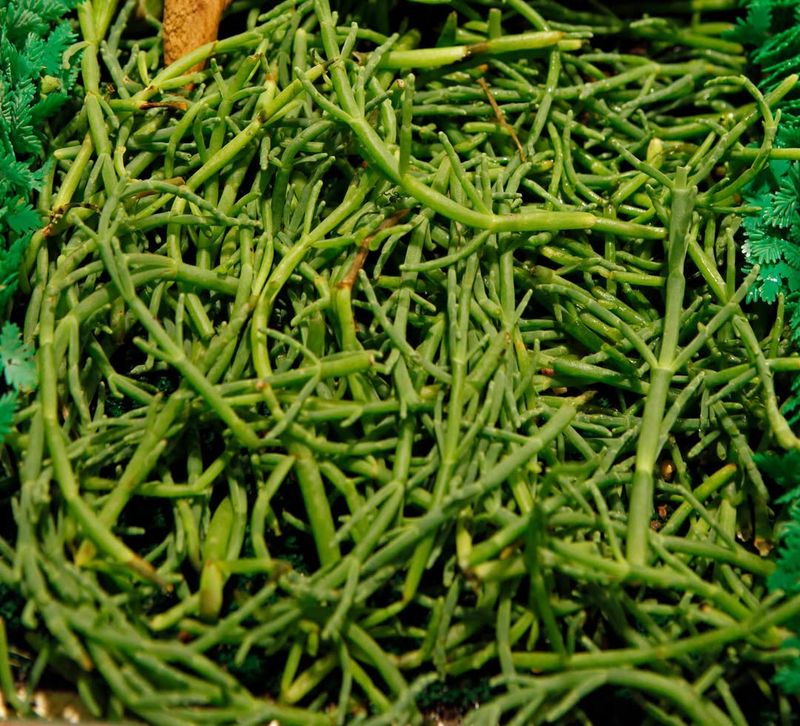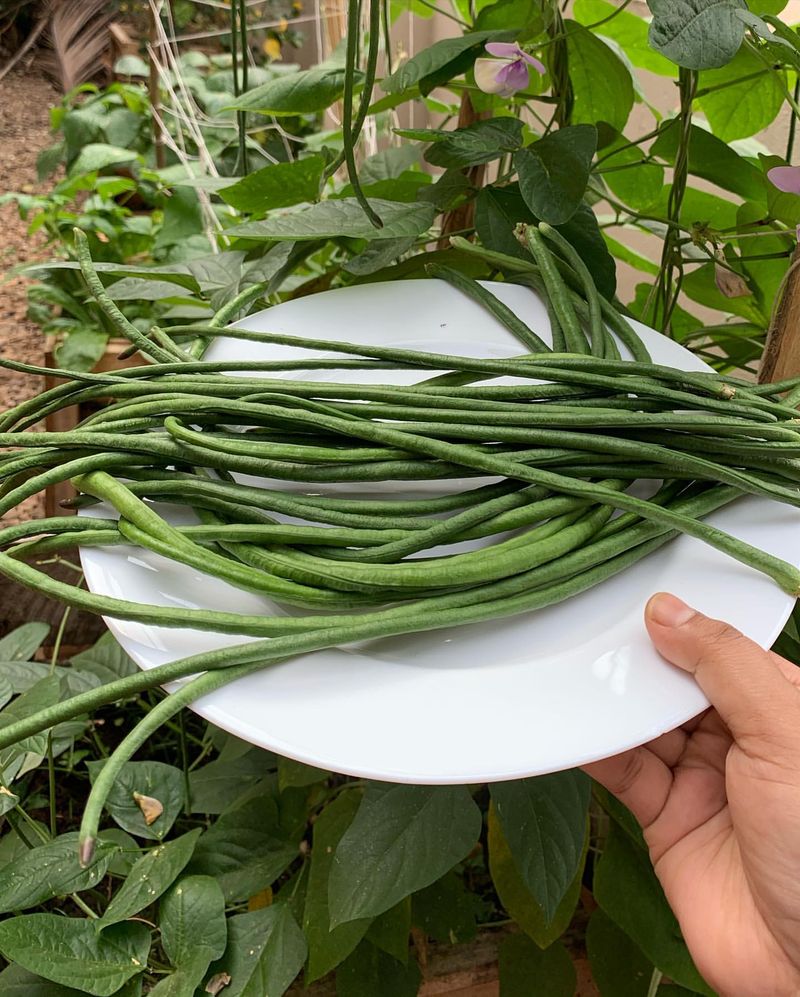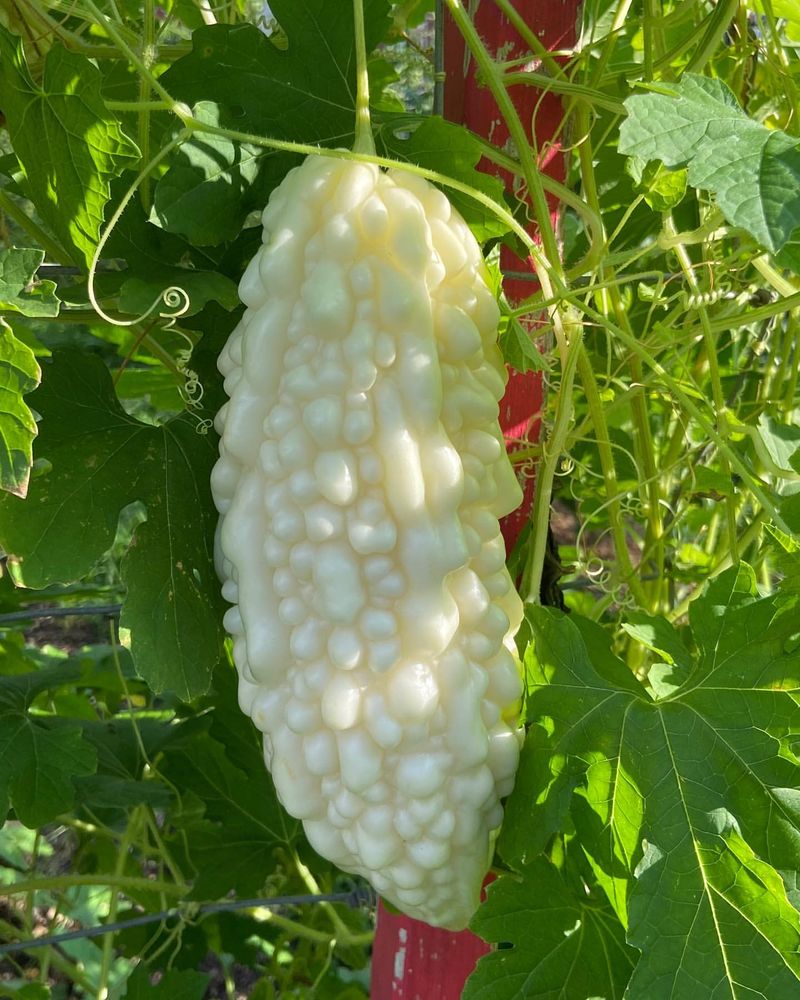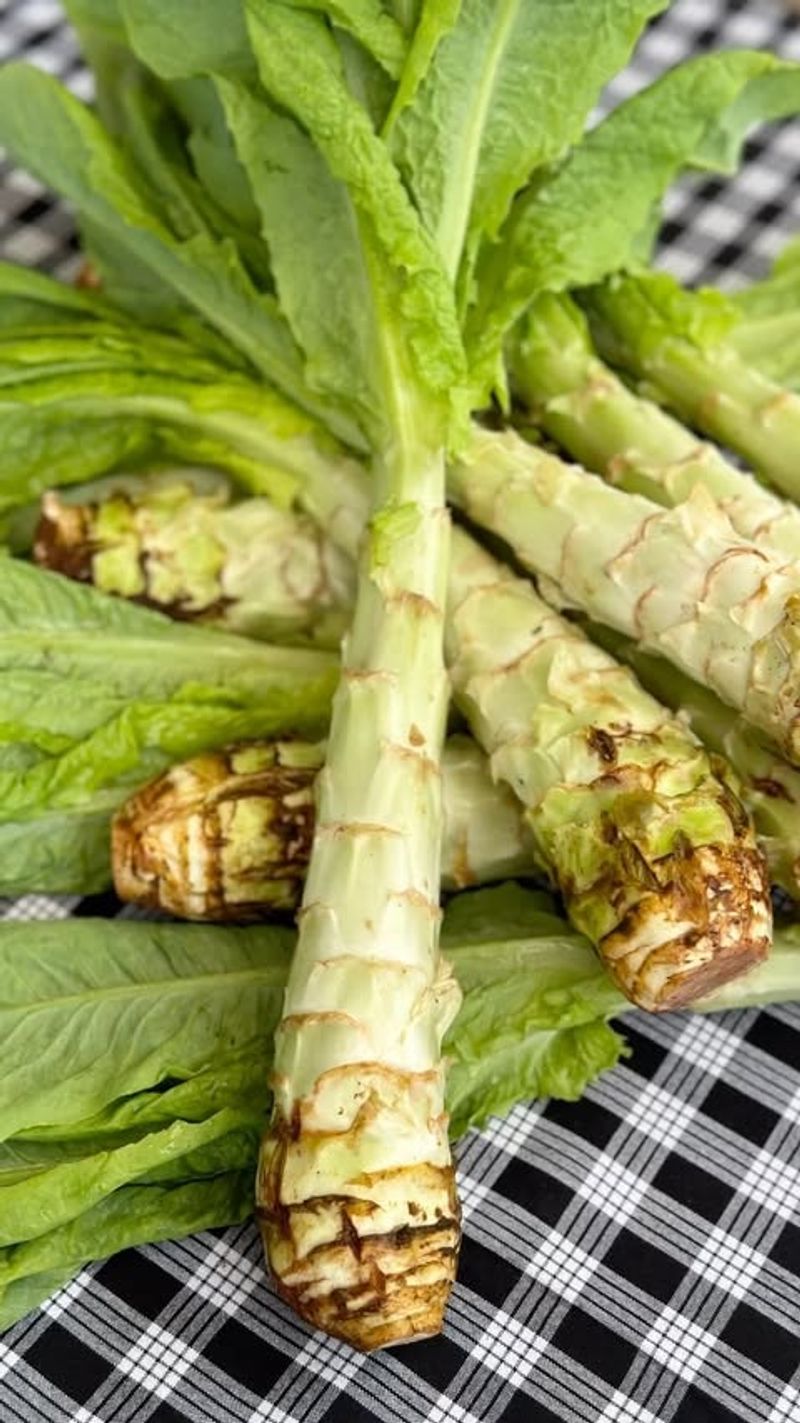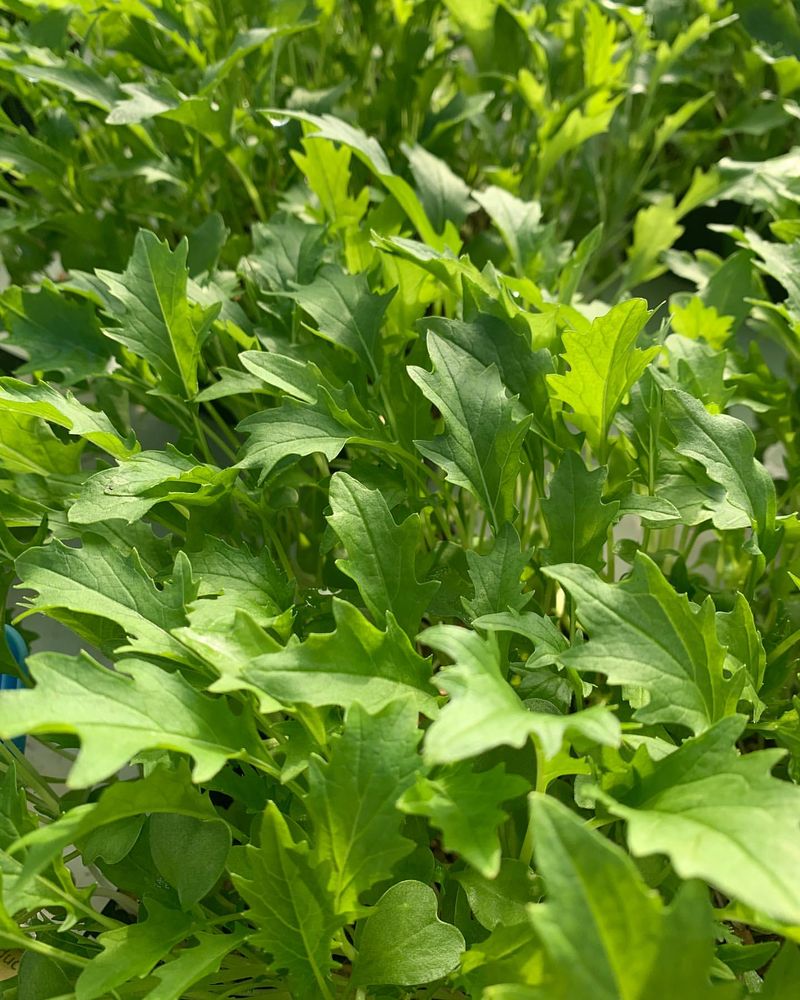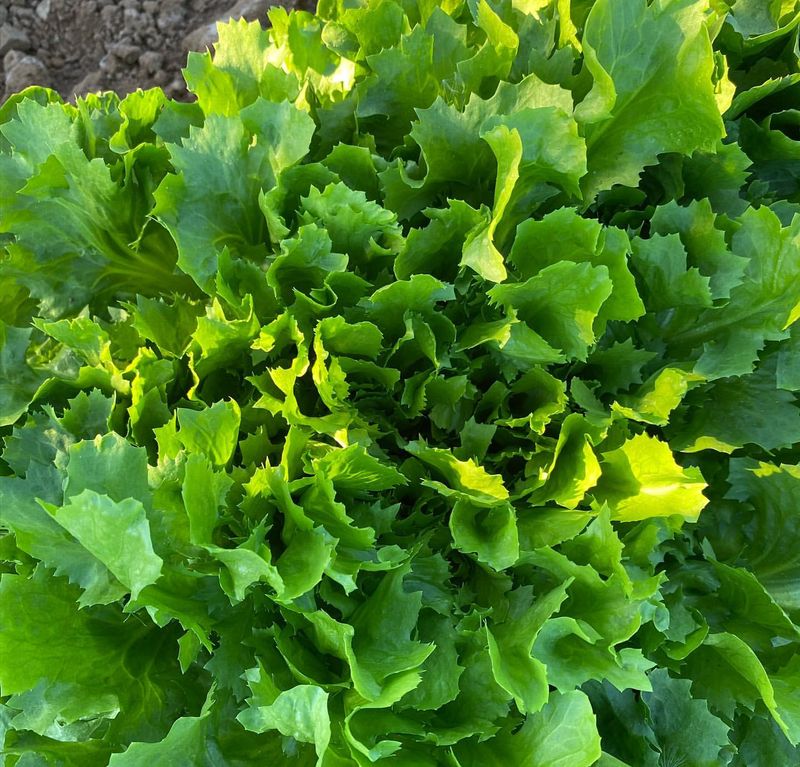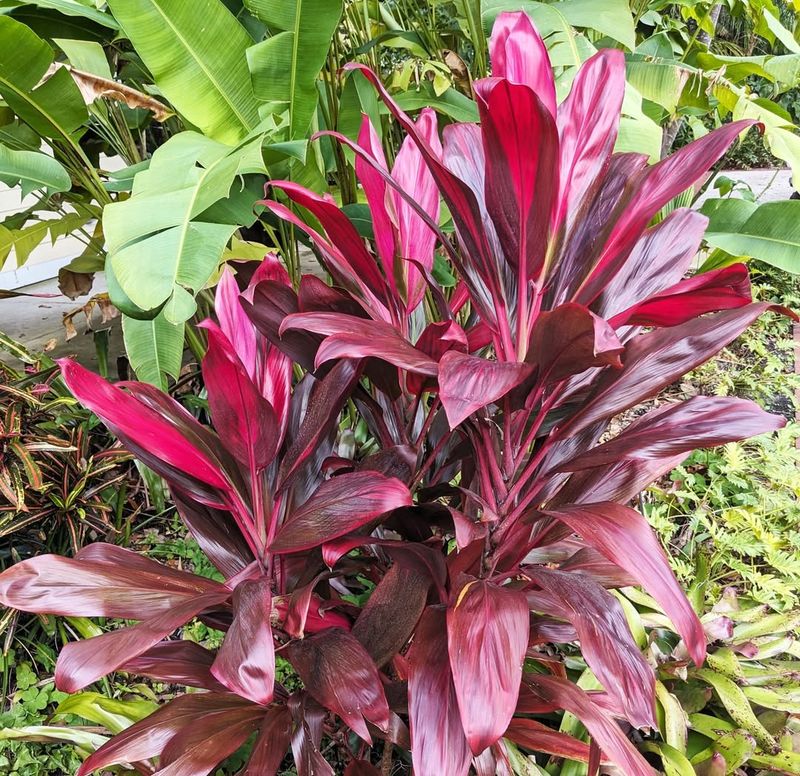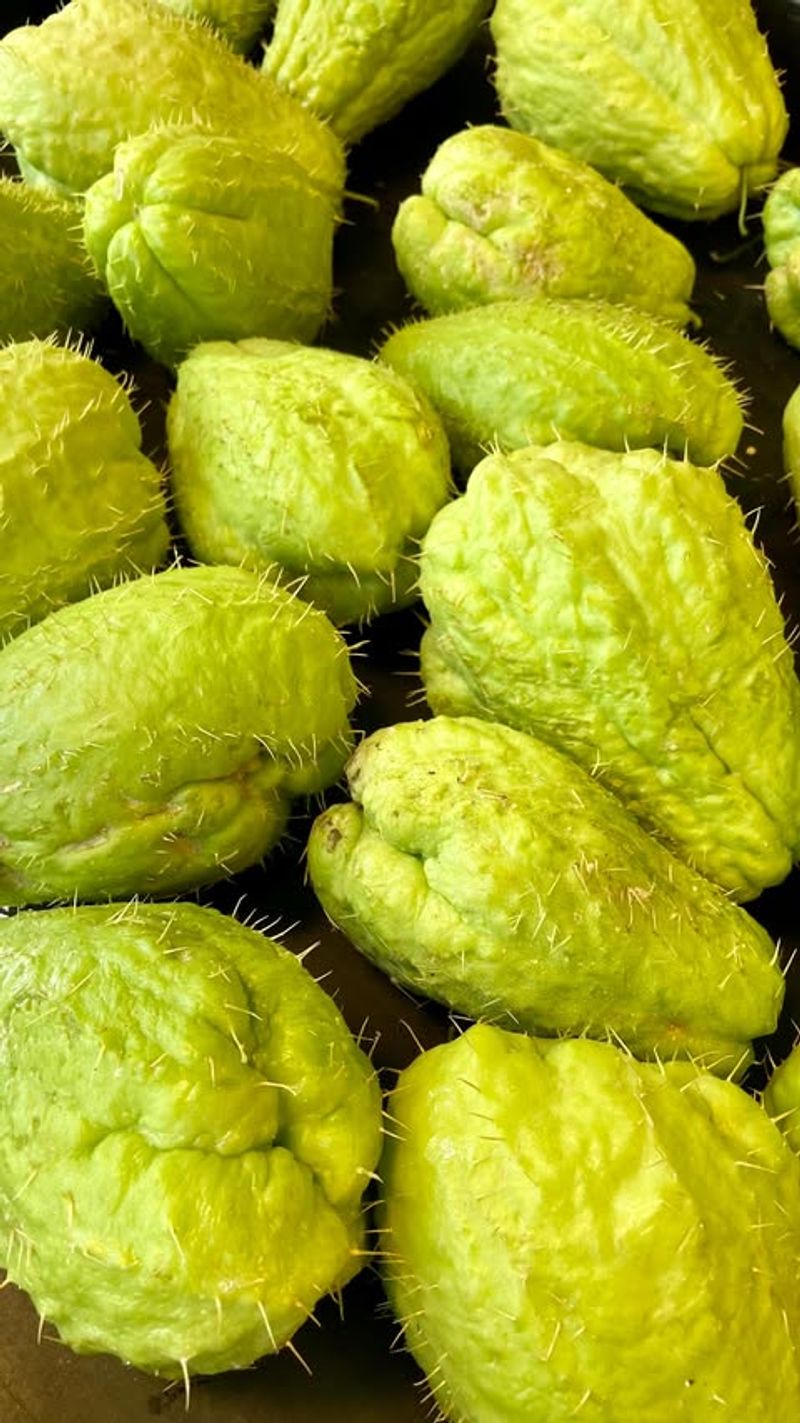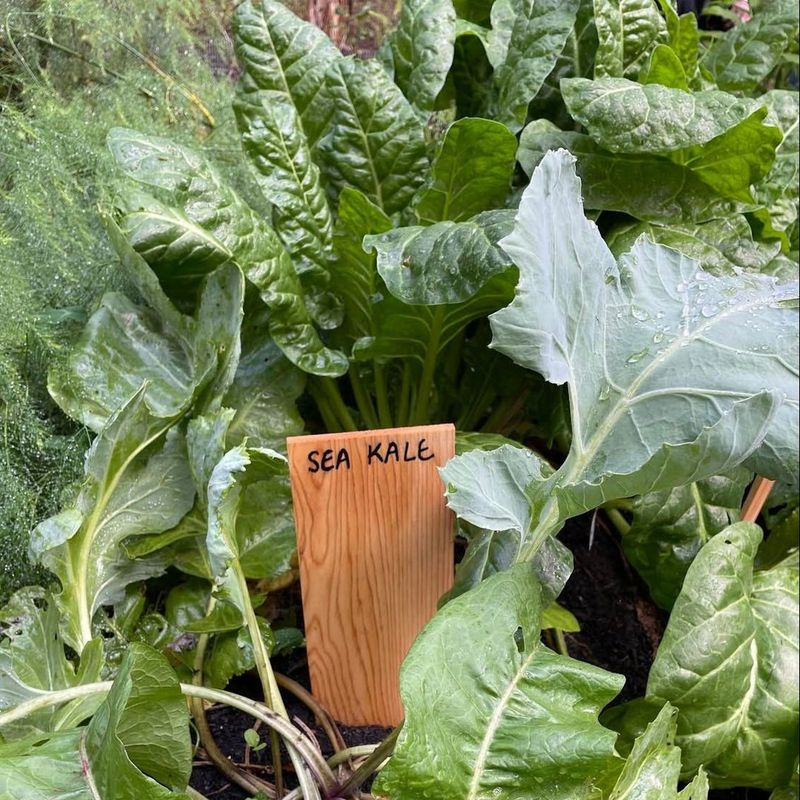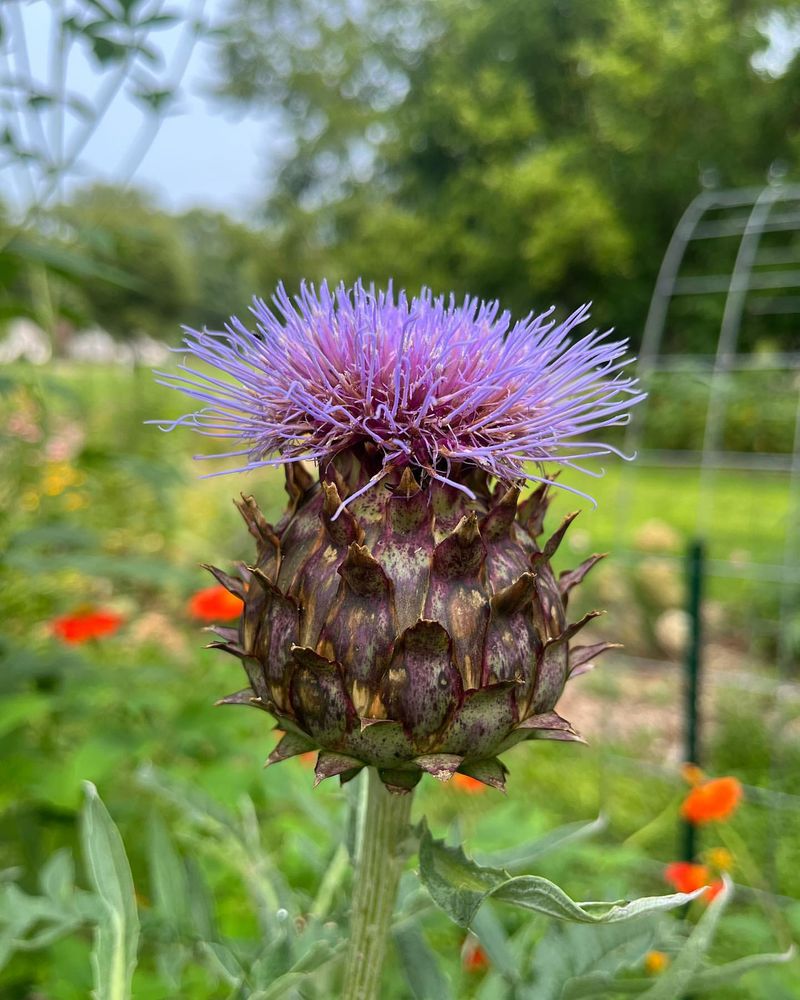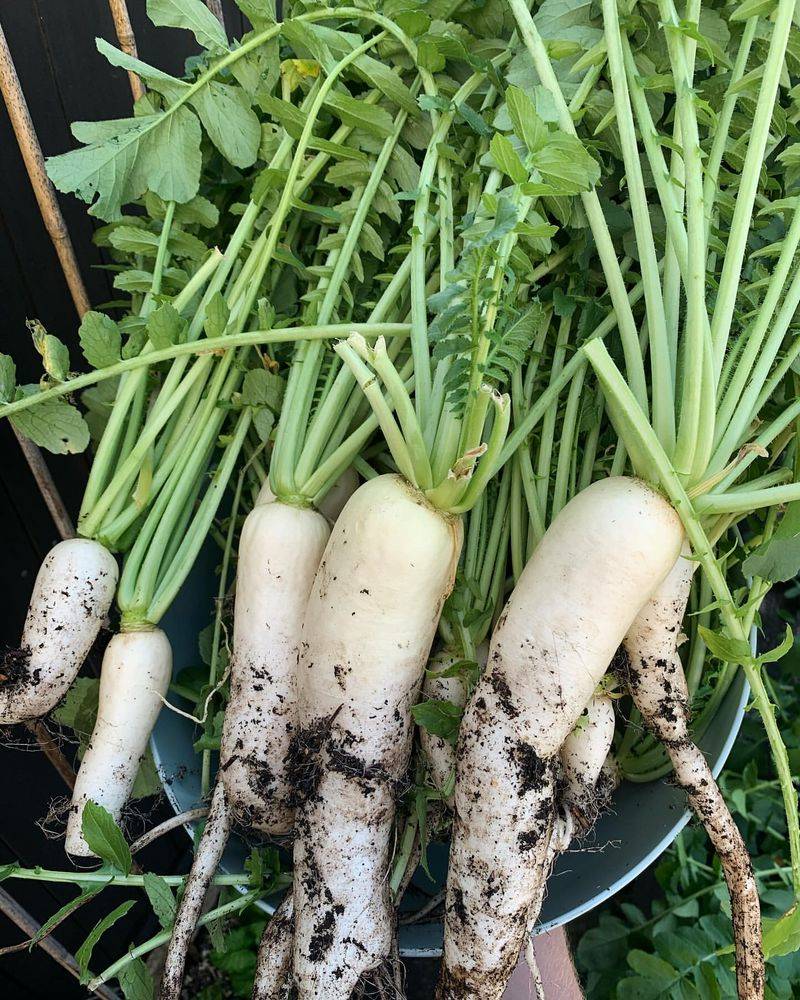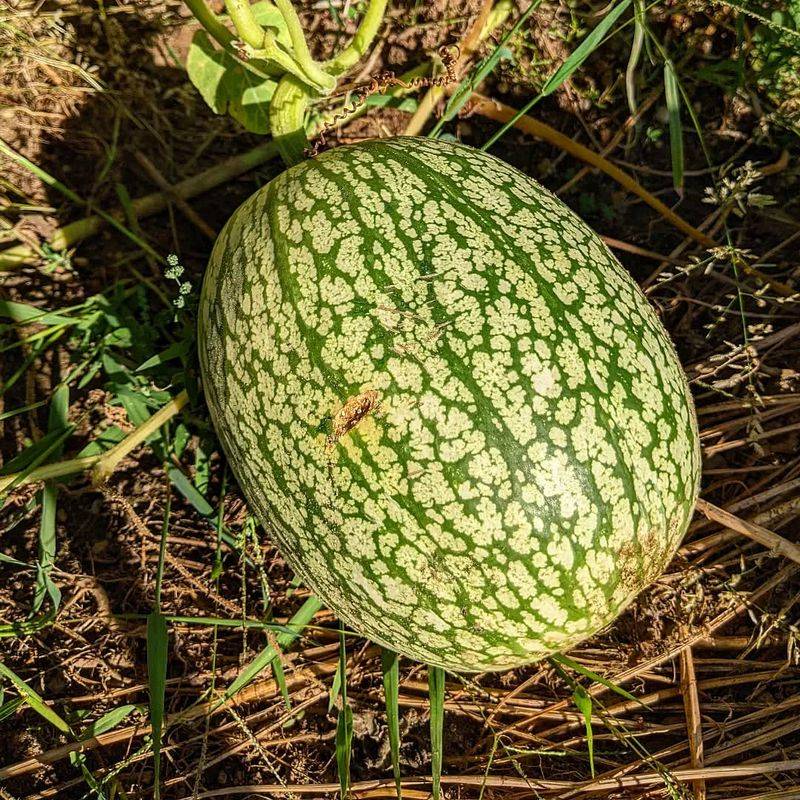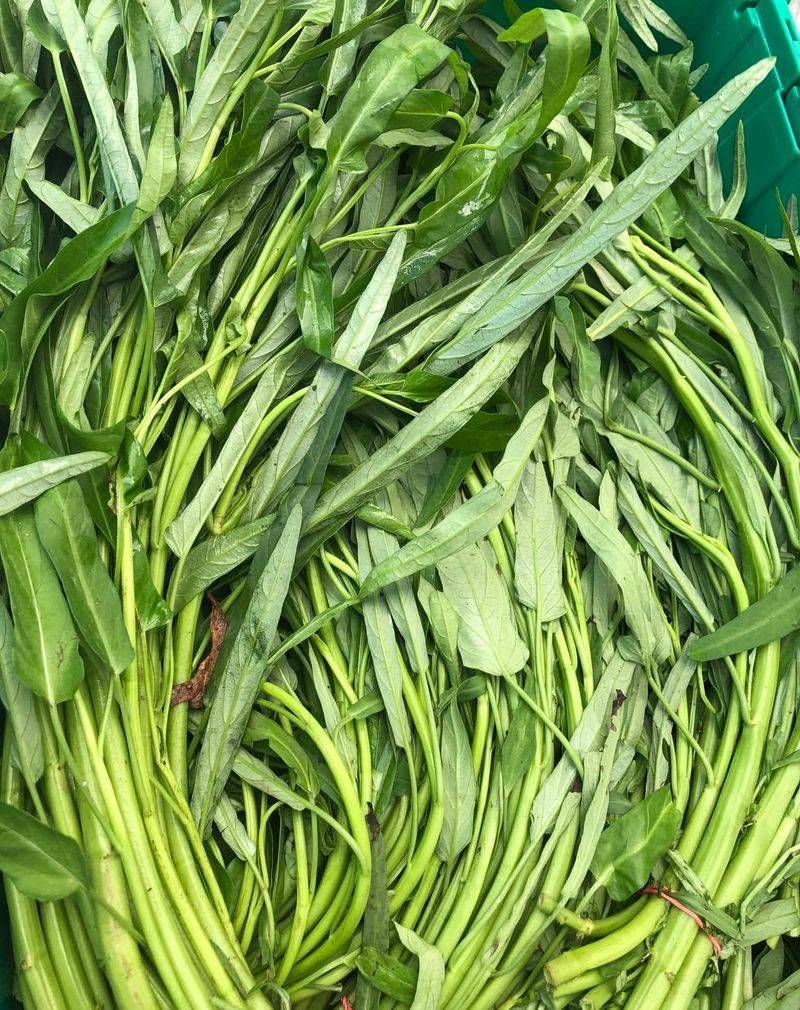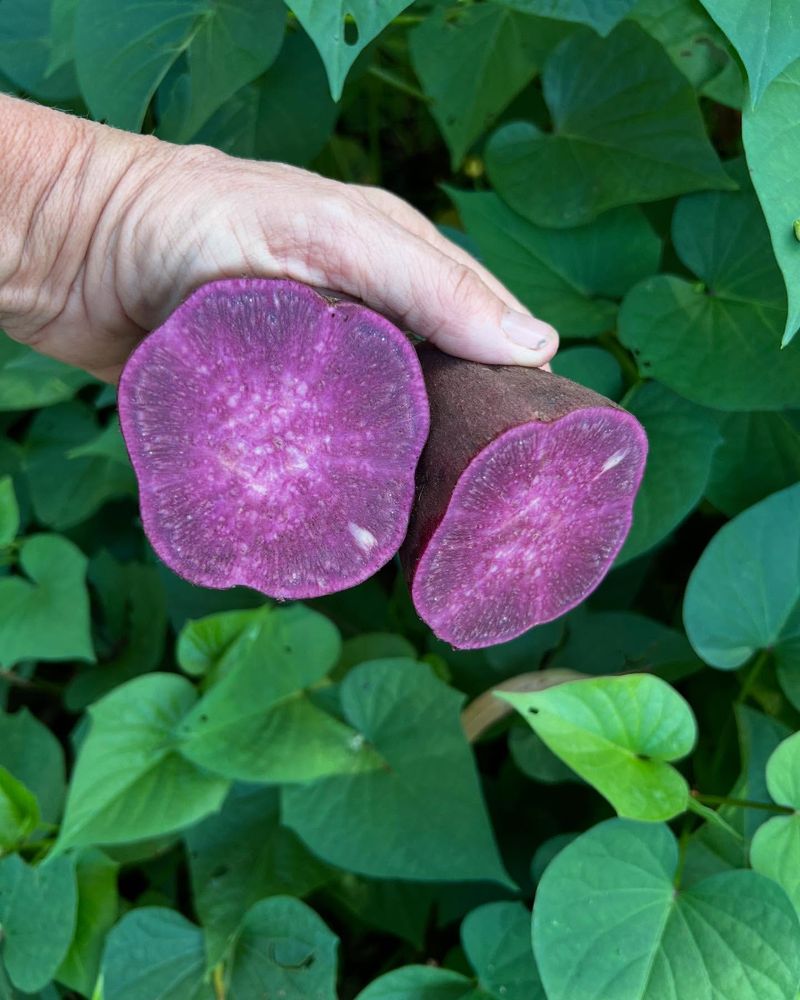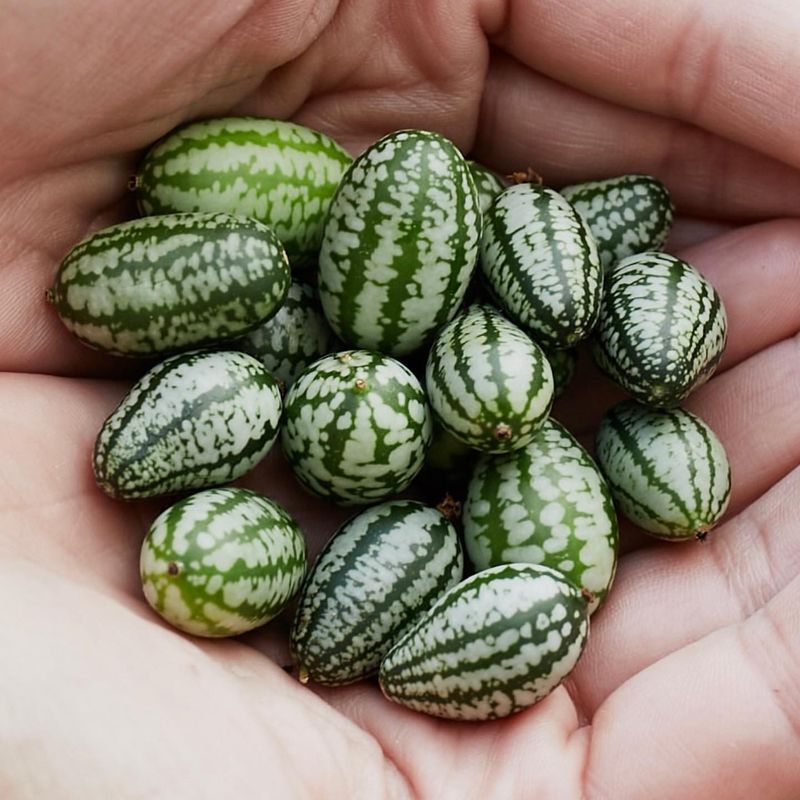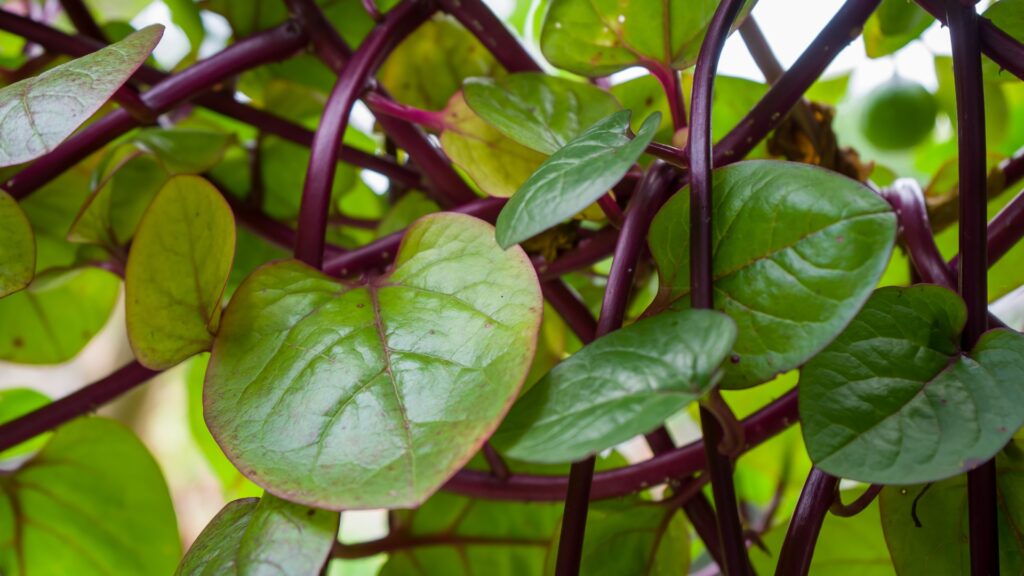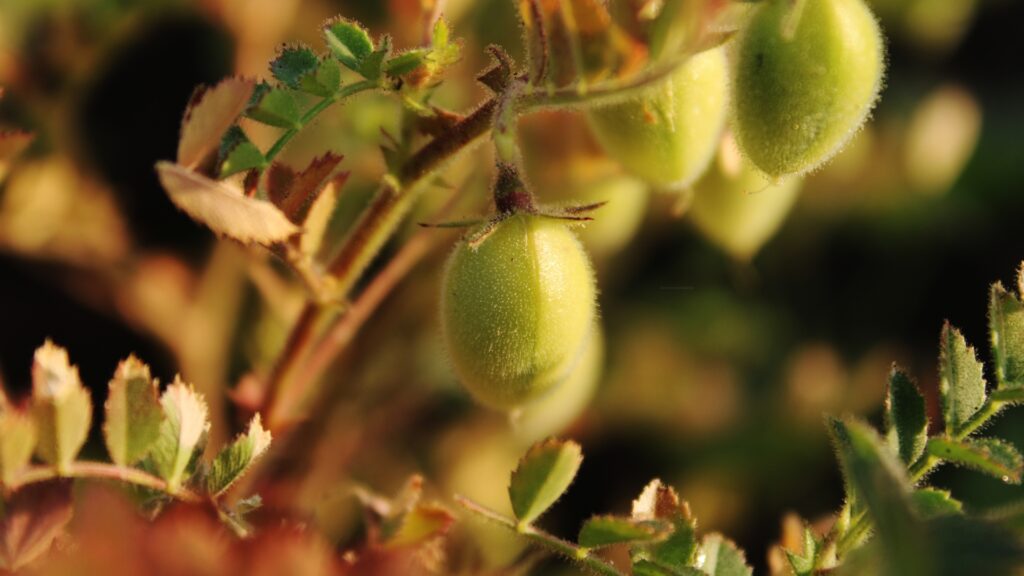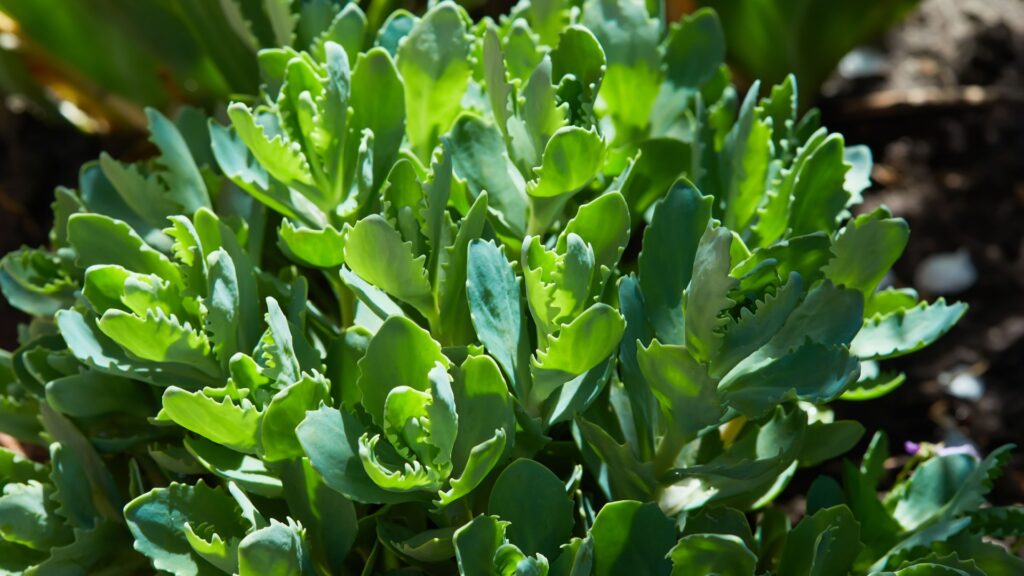Step off the beaten produce path and dig into a world of veggies you’ve likely never seen at your local store. These 27 unusual vegetables bring bold flavors, quirky textures, and surprising health perks to the table.
From the weird to the wonderful, each one is a hidden gem worth a taste—and a second glance. Ready to shake up your plate? Let’s root around and explore the unexpected.
1. Oca
Not your typical root crop, this vibrant tuber enriches dishes with both color and flavor. Oca, known for its tangy taste, is a staple in the Andean region. In New Zealand, it’s often called yams, though it differs from the typical yam. These tubers vary in color, from bright yellow to deep red.
It goes beyond mere aesthetics; its nutritional value includes vitamin C and potassium. Perfect boiled or roasted, Oca’s tartness adds a zesty twist to your meals. If you’re feeling adventurous, incorporate this vegetable into salads or stews.
2. Kohlrabi
An intriguing member of the cabbage family, this bulbous vegetable offers a delightful crunch. Kohlrabi looks like a turnip, but its taste is milder and sweeter. Its crisp texture makes it excellent for slaws and salads. Peeling away its tough outer layer reveals a juicy interior.
You can enjoy it raw, sliced thinly, or cooked. It pairs well with both sweet and savory flavors. Nutritionally, kohlrabi is rich in vitamin C and fiber, supporting digestive health. For a refreshing treat, try pairing it with apple slices.
3. Achocha
Distinct in appearance and flavor, these spiky pods are a unique addition to any meal. Achocha, lesser-known outside its native range, brings a cucumber-like taste with a peppery hint. Growing on vines, these pods can be stuffed or sliced into stir-fries.
In the Andes, where it’s commonly found, it’s a culinary staple. Its versatility extends to raw, pickled, or cooked dishes. Nutrient-wise, achocha is a good source of vitamins A and C. It adds an unexpected twist to salads, offering both texture and flavor.
4. Romanesco
This mathematically mesmerizing vegetable captivates with its intricate spiral patterns. Romanesco, a brassica, is a feast for both the eyes and the palate. Its taste is comparable to cauliflower but slightly nuttier. When cooked, it retains a pleasant crunch, making it ideal for roasting or steaming.
Visually stunning, it elevates any dish it’s included in. Its vibrant green hue pairs beautifully with bright vegetables. Romanesco is not just about aesthetics; it’s rich in vitamins C and K, supporting immune and bone health.
5. Crosne
Imagine a vegetable that looks like a tiny, segmented caterpillar. Crosne is exactly that, offering a delightful crunch. Also known as Chinese artichoke, its flavor is nutty and slightly sweet, similar to sunchokes. These tubers are versatile; you can eat them raw, pickled, or lightly sautéed.
Originating from Asia, they’re a favorite in French cuisine. Nutritionally, they offer a good amount of fiber. The unique appearance of Crosne makes it a conversation starter at dinner tables. Pair them with herbs like thyme for a flavorful dish.
6. Salsify
A root vegetable that surprises with its mild, oyster-like taste. Known as salsify, this root is a hidden gem in the world of vegetables. Its thin, beige appearance belies a creamy texture when cooked. Peel and boil it to bring out its subtle flavor, reminiscent of artichokes.
Salsify is often used in soups and stews, where it absorbs flavors beautifully. It’s also packed with nutrients like potassium and fiber, supporting heart health. Adding it to your vegetable repertoire can introduce new and exciting flavors to your meals.
7. Samphire
Growing in salty marshes, this succulent-like vegetable brings a taste of the sea. Samphire, also known as sea asparagus, is a crunchy delight with a distinctly salty flavor. Often found in coastal regions, it’s a seasonal treat. Blanch it briefly to maintain its texture, then add it to salads or serve as a side.
Its unique taste pairs well with seafood and lemon. Nutritionally, samphire provides a good source of vitamins A and C. This vegetable not only enhances the plate with its vibrant color but also boosts flavor.
8. Yardlong Bean
The length of this vegetable is as impressive as its flavor. Yardlong beans, sometimes called asparagus beans, can grow over a foot long. Despite their size, their taste is similar to regular green beans but slightly denser. They are popular in Asian cuisines, often stir-fried or used in curries.
With a crisp texture, they hold up well in cooking and soak up flavors beautifully. Nutritionally, they offer fiber and vitamin A. For a simple preparation, try them stir-fried with garlic and soy sauce, which enhances their natural taste.
9. Fiddleheads
Looking like something from a fantasy novel, fiddleheads are young fern fronds. Their coiled appearance is intriguing, and their taste is akin to asparagus with a touch of nuttiness. Harvested in spring, they must be cooked before eating to neutralize toxins. Fresh fiddleheads are a seasonal delicacy, often sautéed with butter and garlic.
Nutritionally, they offer antioxidants and omega-3 fatty acids. Enjoy them as a side dish alongside grilled meats or in a hearty salad. Their unique shape and flavor make them a favorite among adventurous eaters.
10. Bitter Melon
Sporting a unique texture, this curious vegetable is known for its distinct bitter taste. Bitter melon, a staple in many Asian cuisines, is an acquired taste. Resembling a cucumber with a bumpy exterior, its interior is soft and fleshy. Cooking mellows its bitterness, often sautéed with spices.
It’s particularly popular for its potential blood sugar-lowering properties. Nutritionally, it offers vitamin C and folate. Try it stuffed with a meat filling or simmered in a curry. This vegetable is both a culinary and health powerhouse, worth exploring in your kitchen.
11. Celtuce
Imagine a vegetable with the texture of asparagus and the taste of lettuce. Celtuce, a type of lettuce grown for its stem, offers this experience. Common in Chinese cuisine, it’s stir-fried or pickled. The stem’s texture is crunchy and its flavor mildly nutty. Nutritionally, celtuce is rich in vitamins A and C.
For a refreshing dish, peel and julienne the stem, then toss it with sesame oil and soy sauce. Its unique taste and texture offer versatility in the kitchen, making it a great addition to salads and stir-fries.
12. Mashua
From the Andes comes a tuber with a distinctive peppery flavor. Mashua, not widely known outside its native regions, offers a taste that combines radish and turnip. Its colorful appearance, ranging from yellow to orange, adds vibrancy to dishes. It’s typically boiled or roasted, enhancing its natural flavors.
In addition to its unique taste, mashua contains compounds that are believed to have medicinal properties. Including this vegetable in your diet could introduce new flavors and health benefits. Pair it with meats for a hearty, flavorful meal.
13. Mizuna
A leafy green with a mild, peppery taste, mizuna is a staple in Japanese cuisine. While it resembles arugula, its flavor is subtler and more versatile. Mizuna leaves are tender, making them perfect for salads, soups, and stir-fries.
Rich in vitamins A and K, it supports eye and bone health. It’s also known for its potential anti-inflammatory properties. Mizuna stands out in salads, bringing both flavor and nutrition. For a simple, healthy salad, combine mizuna with citrus fruits and a light vinaigrette, enhancing its fresh taste.
14. Escarole
Exploring the world of greens brings you to escarole, a leafy vegetable with a subtle bitterness. Its broad leaves are tender and perfect for salads or cooking. Unlike some greens, escarole remains firm when cooked, making it ideal for soups and stews.
It pairs well with beans and garlic, bringing out its natural flavors. Nutritionally, escarole is a rich source of vitamin K, supporting bone health. Its slight bitterness can be mellowed by blanching or pairing with sweet ingredients. For a flavorful dish, sauté it with olive oil and garlic.
15. Ti Plant
This plant is more than just a pretty face; its leaves serve culinary and cultural purposes. Commonly found in tropical climates, the Ti plant offers edible roots and leaves. In traditional Hawaiian cooking, its leaves are used to wrap foods, imparting a subtle flavor.
The roots can be steamed or baked, offering a sweet taste similar to sugarcane. In addition to its culinary uses, the Ti plant is significant in cultural rituals. Nutritionally, the roots provide carbohydrates and fiber. Its versatility makes it an interesting addition to both gardens and kitchens.
16. Chayote
A staple in many Latin American cuisines, chayote is a versatile vegetable with a mild taste. Its appearance resembles a pear, but its texture is crisp like a cucumber. Often used in stews and salads, it absorbs flavors well. Chayote is low in calories and high in vitamin C, making it a nutritious addition to meals.
For a simple preparation, sauté it with onions and garlic, or enjoy it raw in salads. Its subtle flavor allows it to blend seamlessly with a variety of ingredients, enhancing any dish it’s added to.
17. Sea Kale
When thinking of coastal foraging, this robust vegetable comes to mind. Sea kale, thriving by the ocean, brings a unique salty flavor to the table. Its broad, curly leaves can be eaten raw or cooked, offering a taste reminiscent of broccoli.
Blanching enhances its soft texture, making it perfect for salads or as a side dish. Rich in vitamins C and K, sea kale supports overall health. Its natural saltiness pairs well with lemon and butter. For a delightful dish, try sautéing it with garlic and olive oil, showcasing its coastal charm.
18. Cardoon
This vegetable resembles its artichoke cousin, both in appearance and taste. Cardoon, with its thick, spiky stalks, adds a touch of bitterness to dishes. Common in Mediterranean cooking, it’s often braised or baked. Its unique flavor is enhanced when paired with cheese or cream-based sauces.
Nutritionally, cardoons are rich in fiber and vitamins, supporting digestive health. For an intriguing dish, try them roasted with olive oil and lemon zest. This vegetable may require some preparation, but its distinctive taste makes it a worthy addition to your culinary repertoire.
19. Daikon Radish
Rooted in Asian cuisine, this radish brings a refreshing crunch to dishes. Daikon is long and white, with a milder taste compared to other radishes. Its versatility allows it to be pickled, grated, or cooked. Nutritionally, daikon is low in calories and high in vitamin C, making it a healthy choice.
It supports digestion and can be enjoyed raw in salads or soups. For a quick pickle, slice daikon thinly and marinate in rice vinegar and sugar. This root vegetable not only enhances flavor but also offers health benefits.
20. Chilacayote
This Central American vegetable stands out with its elongated shape and speckled skin. Chilacayote is not just visually striking but also incredibly versatile, perfect for soups, stews, and even sweet desserts.
It’s known for its crisp texture and mild flavor, which absorbs the spices and flavors of the dishes it’s added to. A perfect candidate for healthy, low-calorie meals, chilacayote offers a delightful change from the usual squash varieties.
In traditional cuisine, it’s often used for its nutritional benefits, providing a good source of dietary fiber and essential vitamins. Whether you’re adventurous with your cooking or just looking to try something new, chilacayote is worth exploring.
21. Water Spinach
This semi-aquatic plant features hollow stems and tender leaves, making it a versatile ingredient in many dishes. Water spinach, also known as “kangkong” in Southeast Asia, has a mild flavor that pairs well with garlic and chili in stir-fries and salads.
This leafy green is not just delicious but also nutritious, packed with vitamins A and C, iron, and calcium. It thrives in wet, tropical environments, making it a staple in many Asian countries where it grows abundantly.
Whether sautéed or blanched, water spinach offers a refreshing and crunchy texture. It’s an excellent addition to your diet if you’re seeking a vegetable that’s both healthful and versatile.
22. Purple Yam
This striking root vegetable is often mistaken for the Okinawan sweet potato and is native to Southeast Asia. Purple yam’s vivid purple flesh isn’t just eye-catching—it’s also packed with antioxidants.
This yam is subtly sweet and creamy, making it an ideal ingredient for desserts and savory dishes alike. In Filipino cuisine, it’s commonly used in “ube halaya,” a sweet jam that exemplifies its delightful flavor.
Besides its culinary uses, purple yam is valued for its nutritional benefits, including dietary fiber, potassium, and vitamin C. Exploring dishes with purple yam can add both color and nutrition to your meals.
23. Cucamelon
This charming vegetable looks like a miniature watermelon but tastes like a cucumber with a hint of citrus. Cucamelon, also known as “Mexican sour gherkin,” is native to Mexico and Central America and makes a delightful addition to salads and pickles.
These tiny fruits are not only cute but also packed with fiber and antioxidants, offering a healthy snack option. Their refreshing taste is perfect for hot summer days when you crave something light and satisfying.
Growing cucamelons can be a fun gardening project, as they require minimal care and can be grown in small spaces. With their unique appearance and flavor, cucamelons are sure to intrigue both the eyes and the palate.
24. Taro Leaves
These tropical greens are known for their large, heart-shaped appearance and are a staple in many regions. Taro leaves are typically cooked to remove natural toxins, turning them into a nutritious and flavorful dish.
Rich in vitamins A and C, as well as iron, taro leaves contribute to a balanced diet. They are commonly used in stews and curries, adding a rich, earthy flavor that complements a variety of spices.
Handling taro leaves requires some care, but their unique taste and nutritional benefits make them a worthwhile addition to your culinary repertoire. Try them in a traditional dish or experiment with your own recipes.
25. Malabar Spinach
Don’t let the name fool you—this isn’t your typical spinach. Malabar spinach is a climbing vine with thick, glossy leaves that thrive in warm, humid climates. Its flavor is mild and slightly peppery, with a mucilaginous texture that stands out in soups and stir-fries.
Often used in South Asian and African cuisines, it holds up well when cooked and adds body to dishes.
Nutritionally, it’s high in vitamins A and C, as well as iron and calcium. For a refreshing twist, try it sautéed with garlic and a dash of chili—it wilts like spinach but brings its own unique flair.
26. Jicama
Beneath its rough, papery skin lies a crisp, juicy delight. Jicama, a root vegetable native to Mexico, offers a texture similar to an apple with a slightly sweet, nutty flavor. It’s typically enjoyed raw, sliced into sticks or matchsticks for salads and snacks.
Beyond its refreshing crunch, jicama is low in calories and high in fiber and vitamin C. Its natural sweetness balances out spicy or tangy dishes beautifully.
For a healthy snack, try it with lime juice and chili powder—a simple yet flavorful way to enjoy this underappreciated gem.
27. Ice Plant
Looking like it’s dusted with frost, this succulent vegetable truly lives up to its name. Ice plant, native to southern Africa, gets its shimmering appearance from tiny, glistening cells that store water on its surface. Its crisp, juicy leaves have a mildly salty, lemony flavor that works wonderfully in fresh dishes.
Often used raw in salads or lightly sautéed, ice plant adds both texture and visual interest to your plate. It’s especially popular in Japanese and Korean cuisine for its cooling, refreshing quality.
Nutritionally, it’s rich in antioxidants and minerals like calcium and magnesium. For a light and vibrant side, try it tossed with citrus vinaigrette or served alongside seafood—an unexpected, but delightful, garden treasure.

